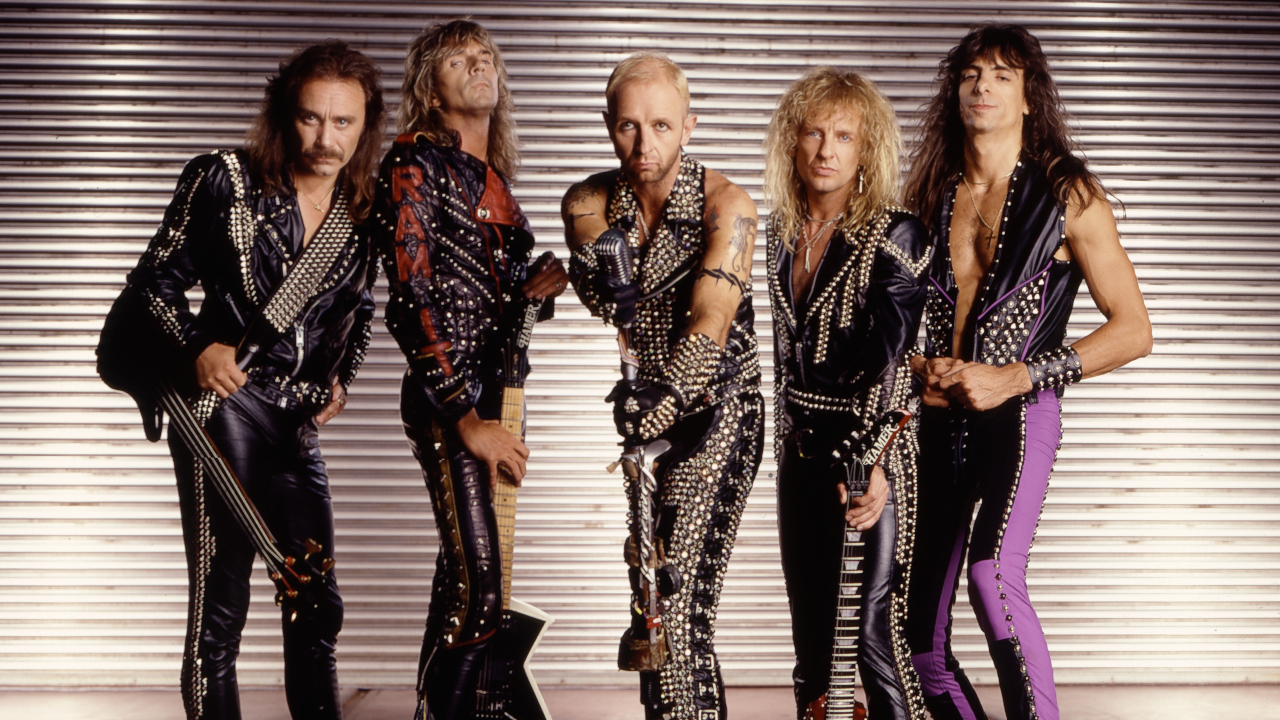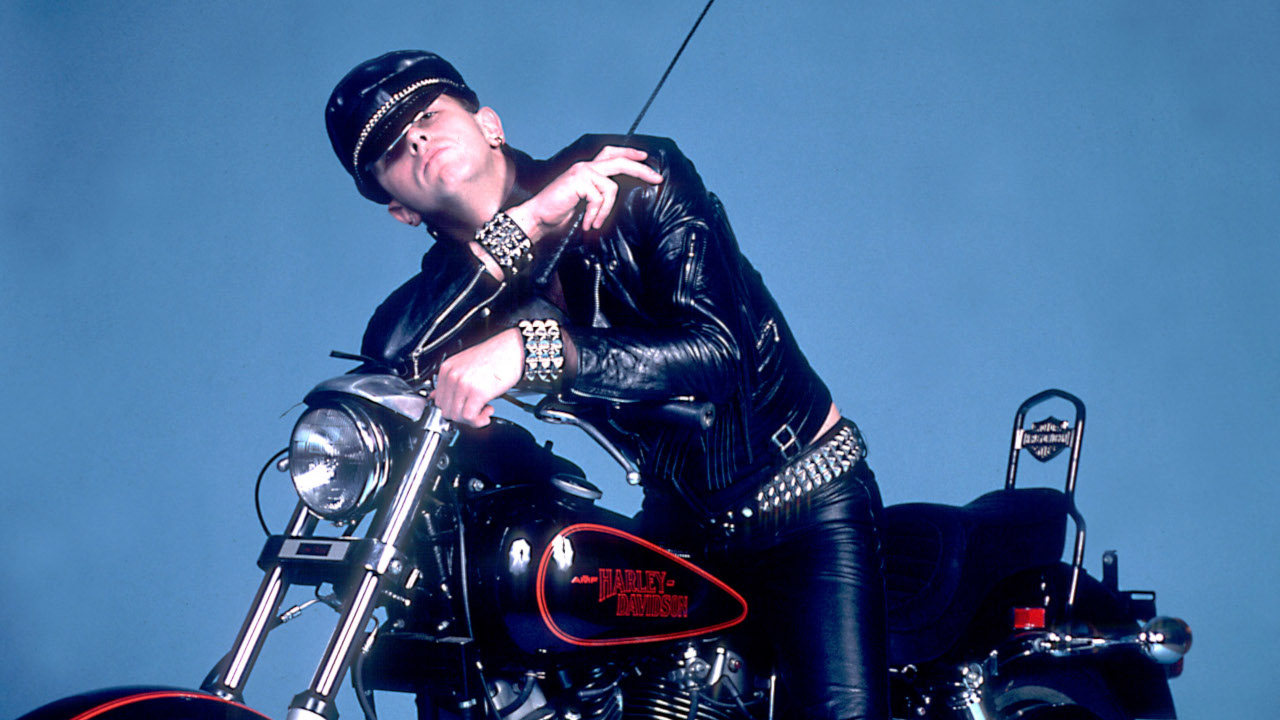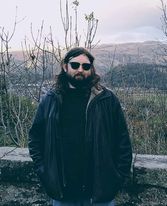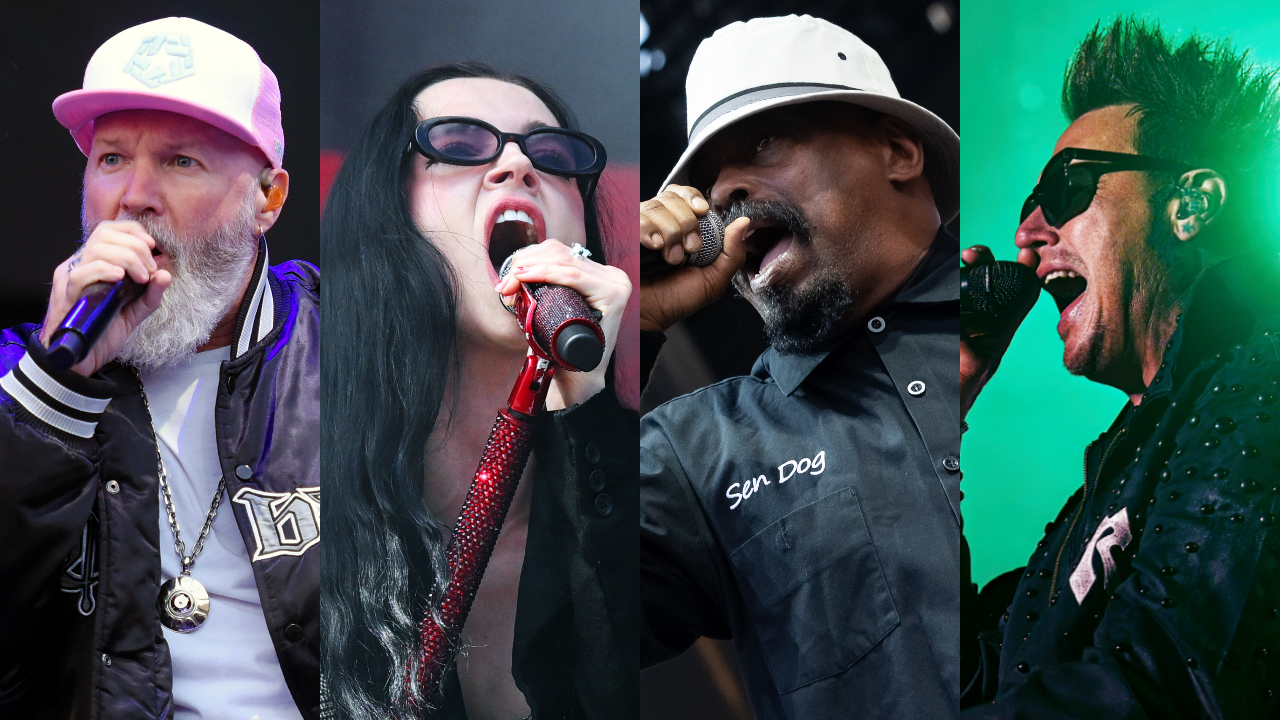"It was metal magic at the perfect moment": how Judas Priest conquered the USA with Screaming For Vengeance
Acid trips. Helicopter rides. Car crashes. Screaming For Vengeance might have broken Judas Priest in the US, but its creation almost broke the band

When Judas Priest formed in 1969, heavy metal didn’t exist. A little over a decade later, Priest had taken up the charge as one of the most iconic bands in the genre, helping shape not only the definitive sound of heavy metal, but its aesthetic, when singer Rob Halford debuted his now iconic studs-and-leather look for the band’s 1979 tour. Moving away from the more progressive elements that had featured in their early work, 1980’s British Steel carried Judas Priest into the Top 10 of the UK charts, peaking at No.4.
“British Steel was the first definitive heavy metal album,” asserts Judas Priest founder and bassist Ian Hill. “Or at least, it was the first that had imagery to back it up and it was definitely our first definitively heavy metal album.”
Before 1980 was through, Judas Priest were already booked to return to the studio. For the first time, they decided to record outside the UK, setting their sights on the Spanish island of Ibiza. “We used to think that you could only make metal in a busy place like a city, but once you close the studio door we can be anywhere in the planet,” Rob Halford says. “It was a unique experience, waking up every day and enjoying this gorgeous Balearic, Iberian vibe.”
Beautiful as Ibiza was, its magic didn’t translate to the album Priest were working on. Considered ploddy and overly commercial, Point Of Entry was a commercial and critical disappointment.
“We never went in to make Point Of Entry sound or feel more commercial. It’s just that it was more… lightweight than British Steel,” Ian says diplomatically. “We went at it in the same way as we always did, wanting to improve and take a step forward. But I think we took a step possibly in the wrong direction.”
Still, Judas Priest weren’t about to let a setback stop them from taking their much deserved place in the sun, and in early 1982 they once again set out for Ibiza, to make what would become their eighth album, Screaming For Vengeance. While the island hadn’t yet earned its reputation as the party capital of Europe, Judas Priest were about to give it a glimpse of the future. This was the 80s after all, and sex, drugs and rock’n’roll wasn’t just a mantra – it was near mandatory.
“Oh, it was about the same for us as in every other camp. Where do you think Mötley Crüe got their ideas from?” Ian says with a devious cackle. “We killed several cars, then a couple of motorcycles as well.”
Sign up below to get the latest from Metal Hammer, plus exclusive special offers, direct to your inbox!
“How we got through that record… I don’t know,” Rob says disbelievingly. “We were dancing with death. I went into town every night getting absolutely fucking bladdered. Ian drove a rental car into the pond out the front of the studio at four o’clock in the morning, waking everybody up.”
With the band often spending the whole night partying, actual work in the studio was sporadic, usually starting in the brief windows between the bandmembers waking up and deciding to hit local clubs Pacha and Ku again. Even producer Tom Allom wasn’t exempt from the debauchery. “I have vague memories of Tom going down a chute into a foam bath at three o’clock in the morning,” Rob muses. “It’s well known, after midnight things get a bit messy.”
Both Rob and Ian agree, however, that the band’s most notorious party animal was guitarist Glenn Tipton. “Glenn had some Keith Moon in him,” Rob says. “He’d go, ‘I’ve got this trick – you don’t need to use the clutch to make a gear change’ and jump from first to third. Eventually the owner of our rental car company calls a meeting. He comes in with an envelope and pours all this white powder out, and I thought, ‘This is either going to be really good, or the other way…’ It was the remains of the clutch and the brakes. So that was it, we had to find another rental company, which was pretty difficult because word had got out around the island.”
With so many distractions on offer, it wasn’t surprising when Priest overran their time in Ibiza, forcing them to relocate to Beejay Studios in Florida – reports of pitchfork wielding Ibizan rental car agencies chasing them remain unsubstantiated. There, they began to put the finishing touches on the album – which also included writing one of their all-time biggest hits.
“You’ve Got Another Thing Comin’ was one of the last songs that we wrote,” Rob says. “We had a few days left before we had to leave and we were desperately looking for another track. It came together really quickly and, because of that, we buried it on side two of the album.”
A radio behemoth with a riff so slick it practically struts out of the speakers, You’ve Got Another Thing Comin’ became one of Judas Priest’s defining and most enduring anthems. From Grand Theft Auto: Vice City to TV series Californication and Archer, the song has frequently infiltrated pop culture, making it all the more wild that it wasn’t the band who saved the song from obscurity, but their record label Columbia.
“When our record company said, ‘We’re going to release this as a single,’ we thought they were mad – we didn’t think it was strong enough,” Rob admits. “Thank god we were wrong!” Ian adds with a laugh. “It was picked up by AM radio and they played the hell out of it, so suddenly you were having people hear it when they’re driving to work, driving the kids to school, in the shops… it was everywhere. It was the song that broke us not just in America, but around the world.”

Released on July 17, 1982, Screaming For Vengeance quickly became Judas Priest’s best-selling record. While the album peaked at No.11 in the UK charts within a week of release, the US radio success of You’ve Got Another Thing Comin’ – released in August – meant Screaming continued to climb the charts there. By the time it reached its peak position of No.17 on the US Billboard 200 in October, it had been certified Gold by the RIAA (it had taken British Steel two years to achieve the same).
By April 1983, it was the band’s first Platinum-certified release. The praise and accolades heaped upon You’ve Got Another Thing Comin’ were all sweeter for the fact that Screaming For Vengeance was not just a commercial breakthrough, but one of the band’s defining artistic statements.
“Nice as it is to beat someone over the head for 40 minutes, Tom found a way to bring in more fans,” Rob says. “He got this definitive sound from everybody. He was on fire as a producer, and we have such a good relationship with him that has endured to this day.”
“I think we’ve played pretty much all of the songs from Screaming… live, except for Pain And Pleasure,” Ian says. “Even then, that’s just because as a song it fit better within the context of the album. Of course, the one we’ve never been able to leave off the setlist is Electric Eye.”
Accompanied by 41-second instrumental The Hellion, Electric Eye sets the stage for what to expect from Screaming For Vengeance: wailing guitars, stabbing riffs and a chorus hook so big it could reel in a megalodon. Songs such as Riding On The Wind and the title track recaptured the urgency and intensity of the band’s late-70s masterpiece Hell Bent For Leather, pre-empting thrash metal a full 12 months before the release of Metallica’s Kill ’Em All.
Elsewhere, the strut-and-preen of Bloodstone and Devil’s Child seemed to predict the ascension of glam metal, their sleek sound more in keeping with Mötley Crüe and the Sunset Strip than the usual grit and smog of industrial Birmingham.
“Nikki Sixx always tells me – ‘Screaming For Vengeance is the record that did for Crüe – we just kept playing it over and over again,’” Rob says casually.
Screaming For Vengeance was more than just Priest’s breakthrough – it was a barometer for where heavy metal would go over the subsequent decade. This was reflected in the sheer scale of the tour the band were scheduled to undertake in support of the album.
“Promoters were phoning up to cancel venues,” Ian says. “They were re-booking us in the same cities in bigger venues. We were competing with Van Halen to see who could get more people into the venues, playing to 15-20,000 people a night.”
Headlining in arenas for the first time, the band kicked off their World Vengeance tour on August 26, 1982 at the Stabler Arena in Bethlehem, Pennsylvania, and had dates booked until late February 1983. Though supports varied across the tour, one notable run saw them joined by fellow ascendant British heavy metal legends Iron Maiden, who had just recruited new singer Bruce Dickinson and released their own breakthrough, The Number Of The Beast.
“I watched them most nights and knew internally, ‘This band is going to be massive,’” Rob says. “Right from the get-go they had a distinctive sound, a distinctive look, attitude, performance onstage… You could sense and feel the love they had for metal. But you could also sense they were hungry.”
“We all were,” Ian agrees. “We worked hard, sometimes we were doing six shows a week. We did something like 30 stops in Texas alone, around 120 shows in America, then a similar amount throughout Europe.”
Gruelling as it was, the anarchic spirit that had fuelled the Screaming For Vengeance sessions in Ibiza still raised its head from time to time. “There was one incident where a taxi knocked K.K. [Downing, guitars] over while we were in Germany,” Rob says. “Glenn suddenly became this instant medic – he’s going, ‘He needs hot water.’ Somebody rushes off to get a bucket and some towels, dipping them in this hot water and putting them on K.K., who suddenly starts screaming in agony. Glenn says to me later, ‘Worst part is – I was tripping on acid at the time.’ The whole era was like a head-on collision between Spinal Tap and Bad News.”
But for Judas Priest, the most absurd episode was still to come. Three months after the conclusion of their World Vengeance tour dates, the band played the US Festival on May 29, 1983. With a reported attendance of around 670,000 people, it was the biggest show of Judas Priest’s career to date, and saw them sharing a bill with the likes of Ozzy Osbourne, Scorpions, Mötley Crüe, Quiet Riot and headliners Van Halen. “We were taken to the site in a helicopter,” Ian recalls. “Flying to the festival, they came up to this hill and the field changed colour – you could just see people going into the distance, disappearing with the curvature of the Earth.”
Although the US Festival reportedly lost $12 million, it cemented the arrival of heavy metal in America, and in November that year, Quiet Riot’s Metal Health became the first metal record to top the US Billboard 200. Though Judas Priest wouldn’t achieve the same level of commercial or chart success throughout the rest of the 80s, Screaming For Vengeance had opened the doors for America to adopt the band as one of their own. But then, with its now-iconic cover of a swooping eagle, designed by artist Doug Johnson, and the fact Rob would ride onto stage each night astride a Harley-Davidson, it does prompt the question of how America could ever resist adopting a band like Judas Priest.
“We’d put our foot in the door with British Steel, but we still needed a couple of years for the groundswell of metal in America,” Rob explains. “Screaming For Vengeance couldn’t have happened at a better time. It was metal magic at the perfect moment."

Staff writer for Metal Hammer, Rich has never met a feature he didn't fancy, which is just as well when it comes to covering everything rock, punk and metal for both print and online, be it legendary events like Rock In Rio or Clash Of The Titans or seeking out exciting new bands like Nine Treasures, Jinjer and Sleep Token.

